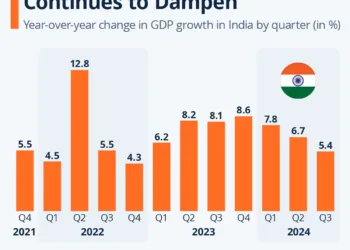The State of Waste-to-Energy in India
Introduction to Waste-to-Energy Technology
Waste-to-energy (WtE) is a significant technology aimed at addressing the increasing waste generation crisis while producing energy from municipal solid waste. In India, the implementation of WtE processes has seen a surge, particularly in urban centers where waste management systems are struggling to keep up with rapid population growth and urbanization. However, the effectiveness and sustainability of WtE plants in India have recently come under scrutiny.
The Timarpur-Okhla Waste-Burning Plant: A Case Study
Accusations and Health Concerns
An investigative report by The New York Times highlighted critical issues surrounding the Timarpur-Okhla waste-burning plant located in Delhi. This facility, operational since 2012, has been pointed out for emitting smoke loaded with toxic substances that far exceed legal limits. Local residents have been voicing concerns for years about health problems linked to the plant, including respiratory ailments, headaches, and allegations of increased miscarriage rates and birth defects.
Environmental Violations
In addition to health concerns, the report alleges that the ashes produced by the plant have been dumped illegally close to residential areas. The proximity of such hazardous waste not only poses immediate health risks but also raises long-term environmental concerns about soil and water contamination in the area.
Overview of Waste-to-Energy Plants in India
Current Landscape
Despite the controversial nature of WtE facilities, around ten plants are known to be operational across India. Four of these plants are located in the National Capital Territory of Delhi, which generates a substantial amount of household waste due to its large population. Interestingly, the Ministry of Housing and Urban Affairs has recently omitted specific data on the number of WtE facilities, signaling possible gaps in transparency regarding the operation and efficacy of these plants.
Historical Context
India’s journey into waste-to-energy technology dates back to 1987, when the first plant was commissioned in Delhi but quickly shut down due to operational challenges. The subsequent establishment of newer plants, such as the Timarpur-Okhla facility, was seen as a renewed effort to harness the potential of waste energy generation.
Challenges Facing Waste-to-Energy Plants
Technical and Operational Hurdles
A significant factor contributing to the inefficacy of India’s WtE plants is the heterogeneous nature of the waste. Unlike countries with successful waste-to-energy frameworks that process sorted and recycled waste, India’s waste is often mixed with a high proportion of organic and recyclable materials, which complicates the burning process. According to the Centre for Science and Environment (CSE), this mixed waste composition greatly diminishes the efficiency and effectiveness of energy recovery.
Insufficient Regulatory Framework
The CSE also critiques India’s capacity to enforce robust emission standards for waste-to-energy plants. Given the present operational challenges, there is a heightened need for stringent monitoring and adherence to environmental regulations. Unfortunately, the prevailing framework remains inadequate, leaving a gap in safeguarding public health and environmental integrity.
Government Support for Waste-to-Energy Initiatives
Continued Push for Expansion
Despite mounting evidence of the challenges faced by the existing WtE plants, the Indian government continues to advocate for the expansion of waste-to-energy technologies. Estimates suggest that there are approximately 10 to 15 additional plants currently under construction, with even more proposed. This push reflects a broader governmental strategy aimed at tackling the waste crisis and meeting energy needs.
Public Backlash and Future Prospects
The support for WtE initiatives is met with significant public resistance, particularly in areas near operational plants. Residents’ concerns about health issues and environmental degradation are leading to a growing movement against the establishment of waste-to-energy facilities. As plans for new plants materialize, it remains to be seen how these social dynamics will unfold in the context of India’s ongoing waste management and energy production endeavors.
Conclusion (omitted)
(Note: The Conclusion section was intentionally omitted as per your request.)










